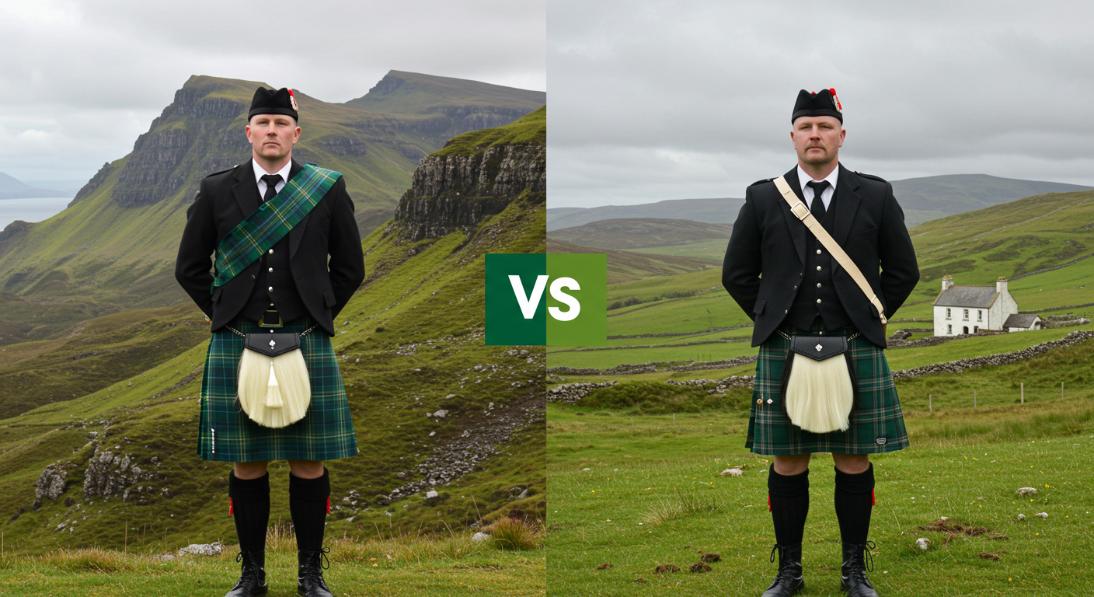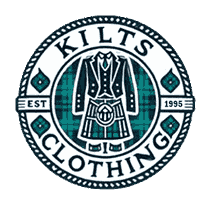Are Kilts Irish or Scottish? Complete Analysis

Kilts are iconic garments often associated with Celtic cultures and traditions. These unique pieces of clothing have sparked debates for years regarding their origins—specifically, whether they are Irish or Scottish. Both cultures have rich histories tied to the kilt, but where did it originate, and how did it evolve? In this article, we will explore kilts' origins, history, and cultural significance in both Irish and Scottish traditions, clearing up the confusion once and for all.
What is a Kilt?
A kilt is a knee-length skirt-like garment, typically made of woolen cloth with pleats at the back. It's traditionally worn by men and secured around the waist with a buckle, often adorned with sporrans (small pouches) at the front. While the kilt is most famously associated with Scotland, its roots lie in Irish and Scottish heritage.
The kilt's design is functional and symbolic, with the pleats allowing for freedom of movement—ideal for warriors and laborers in ancient times. Over the centuries, kilts have evolved in style and usage, becoming a symbol of national pride, especially in Scotland.
A Brief History of Kilts
The history of the kilt is a long and fascinating one. The earliest forms of kilts were simple tunics worn by Celtic tribes in both Ireland and Scotland. However, these early versions weren't quite the distinct "kilt" we recognize today. The modern kilt, characterized by its pleated woolen fabric, came about in the 16th century. Still, its roots can be traced back to the Roman era when Celtic warriors wore long tunics or cloaks.
The transition into the modern kilt, especially as it's recognized in Scotland, occurred in the Highlands in the 17th and 18th centuries. During this period, wearing kilts became a symbol of Highland Scottish culture, eventually spreading across the British Isles.
Kilts in Irish History
While kilts are now most strongly associated with Scotland, Ireland has a long-standing connection to the garment—Ireland's historical use of kilts dates back to the Middle Ages. Early Irish warriors were known to wear tunics made of wool or linen, often fastened with a belt at the waist. These garments were similar in shape to kilts, though less distinctively pleated.
Unlike the tartan patterns worn in Scotland, Irish kilts were typically made from simpler, solid colors. While kilts were never as widespread in Ireland as in Scotland, there were regions where they were worn, particularly in the west and north.
Interestingly, the Irish people did not adopt the same style of tartan plaid that became synonymous with Scottish kilts. In Ireland, traditional clothing was often based on solid colors and patterned fabrics that were less intricate than the distinctive tartan designs of Scotland. Despite this, Irish kilts were seen as part of the wider Celtic heritage, representing national identity and pride.
Kilts in Scottish History
On the other hand, Scotland has a much stronger association with kilts, mainly due to their prominent role in the Highland culture. The Scottish kilt became an emblem of the Scottish Highlands, with its distinct tartan patterns reflecting different clans and regions.
In the early 18th century, wearing kilts became an essential symbol of Scottish identity. After the Jacobite Rebellions, which aimed to restore the Stuart monarchy, the British government banned the wearing of kilts as part of efforts to suppress Scottish culture. This ban, known as the Dress Act of 1746, lasted until the 1780s and made the kilt even more of a symbol of resistance and pride.
Scottish kilts for men and Women evolved by introducing elaborate designs and accessories, including the sporran and belts and buckles. Today, kilts are still worn with great pride in Scotland, especially during formal events like weddings, military parades, and Highland games.
The Key Differences Between Irish and Scottish Kilts
Though kilts have ties to Irish and Scottish cultures, the two styles have some key differences.
- Fabric and Tartan Patterns: The most notable distinction is the fabric and design. Men's Scottish kilt are most famous for their tartan patterns representing different clans or regions. Irish kilts, in contrast, are less likely to feature tartan and are often made from solid-colored wool or linen fabrics.
- Cultural Significance: While Irish and Scottish kilts hold cultural importance, the kilt is often seen as a symbol of Scottish identity, with strong ties to the Highland tradition. In Ireland, kilts are less commonly worn. They may be more associated with folk festivals or special occasions when they are.
- Style and Construction: Scottish kilts are generally more structured, with pleats sewn into the fabric for easy movement. Irish kilts, particularly those worn in rural regions, might have been more straightforward and less formal in their construction.
Cultural Significance of Kilts in Ireland and Scotland
In both Ireland and Scotland, kilts hold a deep cultural significance. For the Scots, the kilt symbolizes Highland pride, tradition, and resilience. It's worn at national celebrations like Burns Night and by people of Scottish descent worldwide to represent their heritage.
In Ireland, kilts symbolize national pride, although they are less commonly worn today. Historically, they were worn during times of rebellion and resistance. Irish folk music and dance often feature performers in kilts. Kilts are also worn during Irish festivals like St. Patrick's Day. However, they may not carry the same widespread usage as in Scotland.
Contemporary Use of Kilts in Ireland and Scotland
Today, kilts are worn in Ireland and Scotland, though their popularity varies. The kilt remains a prominent garment in Scotland for formal occasions, particularly weddings, ceilidhs (traditional Scottish dances), and public ceremonies. While the kilt is less common in Ireland, it is often worn during cultural festivals and parades, especially those celebrating Irish heritage.
Interestingly, kilts have gained popularity internationally, with people worldwide adopting the style for formal events, festivals, or even as part of fashion trends.
Myths and Misconceptions
There are many myths surrounding the kilt, particularly in terms of its origins. One common misconception is that kilts are strictly Scottish. Still, as we've seen, Ireland also has a history of wearing kilt-like garments. However, they didn't develop the iconic tartan style. Another myth is that wearing a kilt signifies Scottish ancestry. While this is common, people from all walks of life, regardless of heritage, wear kilts today.
Conclusion
So, are kilts Irish or Scottish? The kilt belongs to both cultures, though it is most strongly associated with Scotland today. Its origins lie in the shared Celtic heritage of Ireland and Scotland. Still, it is in Scotland where the kilt has become a symbol of national identity, with its tartan patterns and formal styles.
While kilts are worn less frequently in Ireland today, they still represent the nation's rich cultural history and are proudly worn at special events. Ultimately, the kilt is more than just a piece of clothing; it's a symbol of Celtic pride, no matter which side of the Irish Sea it's worn.


